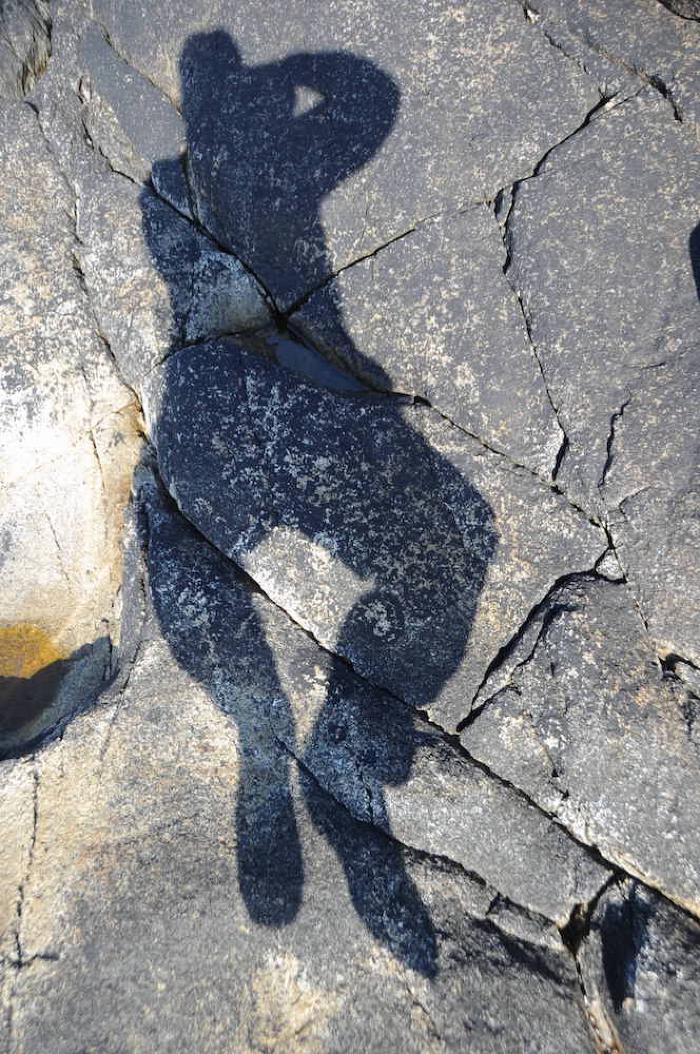Shadow — Tanraq

A shadow is a dark image created when an object blocks a light source. Every shadow has three parts—the dark center or umbra, and lighter edges are known as the penumbra and antumbra depending on your perspective. Shadows can be long or short, based on the location of the light source, and they often appear blue. This happens when the bright yellow light from the sun is blocked leaving the ambient blue light of the sky.
Whatever their appearance, many cultures associate shadows with darkness, danger, and the supernatural. For many shadows provide a glimpse of another world. This is true among the Alutiiq. In Alutiiq, there are two recorded words for shadow—talineq and tanraq. Both words come from roots meaning blocked, suggesting that light is filtered. Although traditional beliefs about shadows are not well known, the shadow seems to be part of a person’s essence or inner spirit. Tanraq is also used to mean “ghost.”
Elders recall that caring for one’s shadow was an important part of annual masquerading traditions, a practice with ties to both Alutiiq and Christian spirituality. During the Christmas season, people who disguised themselves and traveled from house to house singing and eating left their shadows behind. Elders recall people covering themselves with blankets and then pretending to take the shadow out to put it away for the next year. Then, after masquerading, people returned to the places they’d visited to retrieve their shadows.
This practice may have ties to Alutiiq winter festivals, where interactions with the powerful spirit world took place. Hiding one's shadow, or inner spirit, may have helped to protect people from interactions with the supernatural.
